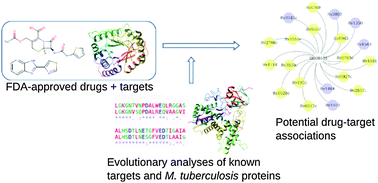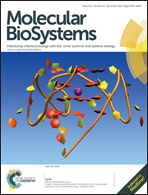Recognizing drug targets using evolutionary information: implications for repurposing FDA-approved drugs against Mycobacterium tuberculosis H37Rv†
Abstract
Drug repurposing to explore target space has been gaining pace over the past decade with the upsurge in the use of systematic approaches for computational drug discovery. Such a cost and time-saving approach gains immense importance for pathogens of special interest, such as Mycobacterium tuberculosis H37Rv. We report a comprehensive approach to repurpose drugs, based on the exploration of evolutionary relationships inferred from the comparative sequence and structural analyses between targets of FDA-approved drugs and the proteins of M. tuberculosis. This approach has facilitated the identification of several polypharmacological drugs that could potentially target unexploited M. tuberculosis proteins. A total of 130 FDA-approved drugs, originally intended against other diseases, could be repurposed against 78 potential targets in M. tuberculosis. Additionally, we have also made an attempt to augment the chemical space by recognizing compounds structurally similar to FDA-approved drugs. For three of the attractive cases we have investigated the probable binding modes of the drugs in their corresponding M. tuberculosis targets by means of structural modelling. Such prospective targets and small molecules could be prioritized for experimental endeavours, and could significantly influence drug-discovery and drug-development programmes for tuberculosis.

- This article is part of the themed collection: Chemical Biology in Molecular BioSystems

 Please wait while we load your content...
Please wait while we load your content...